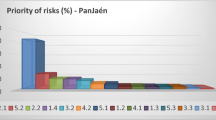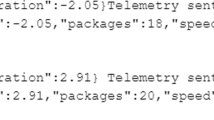Abstract
The aim of the paper is to present a case study and to point out the possibilities of using computer simulation for the purpose of increasing the efficiency and efficiency of custom production of a company. The use of simulation modeling as a scientific method in research and in practice brings benefits such as financial, time, material and energy savings, as well as streamlining activities in real practice. The development of advanced simulation systems has opened up new possibilities and significantly supported the trend of streamlining production activities, thus reducing costs and improving business performance. Simulation, however, is not a tool for obtaining an optimal solution, but rather a tool that allows you to test different decision outputs on a simulation model. Such a simulation model makes it possible to carry out various experiments to evaluate, analyse and determine solution parameters that can then be used in a real system. Risk factors can be investigated and determined beforehand by ‘replacing’ the running simulation model while monitoring system performance and behaviour, then, after applying the required changes, the future behaviour of the system is examined for any potential problems and obstacles. Can be removed in advance. The goal is to analyse the material flow in the production process and then create a simulation to determine the length of production and identify bottlenecks in the production process. In order to get a better idea of the production process, a simulation model was developed in the selected software tool as a custom production project under the conditions of a particular company. The incentive to start production is given to the customer, where every order placed is immediately sent to the customer. The highest frequency order in the enterprise’s production program is used to create the material flow.








Similar content being viewed by others
References
Straka, M., Trebuna, P., Rosova, A., et al. (2016). Simulation of the process for production of plastics films as a way to increase the competitiveness of the company. Przemysl Chemiczny, 95(1), 37–41.
Ondov, M. (2019). The analysis of the system of control and implementation of the material flow in the manufacturing plant, Bachelor thesis, Technical University of Kosice, p. 48.
Straka, M., Malindzakova, M., Rosova, A., et al. (2016). The simulation model of the material flow of municipal waste recovery. Przemysl Chemiczny, 95(4), 773–777.
Sofranko, M., Zeman, R. (2014). Simulation of pipeline transport backfill mixtures. In ICCC 2014. 15th international carpathian control conference (ICCC), pp. 578–583.
Malindzakova, M., Straka, M., Rosova, A., Kanuchova, M., & Trebuna, P. (2015). Modeling the process for incineration of municipal waste. Przemysl Chemiczny, 94(8), 1260–1264.
Sofranko, M., WittenbergeR, G., & Skvarekova, E. (2015). Optimisation of technological transport in quarries using application software. International Journal of Mining and Mineral Engineering, 6(1), 1–13.
Straka, M., Lenort, R., Khouri, S., & Feliks, J. (2018). Design of large-scale logistics systems using computer simulation hierarchic structure. International Journal of Simulation Modelling, 17(1), 105–118.
Straka, M., Rosova, A., et al. (2018). Principles of computer simulation design for the needs of improvement of the raw materials combined transport system. Acta Montanistica Slovaca, 23(2), 163–174.
Straka, M., Cehlar, M., Khouri, S., Malindzakova, M., Rosova, A., & Trebuna, P. (2016). Asbestos exposure and minimization of risks at its disposal by applying the principles of logistics. Przemysl Chemiczny, 95(5), 963–970.
Rosova, A. (2007). Logistics costs of enterprise. Acta Montanistica Slovaca, 12(2), 121–127.
Laciak, M., Sofranko, M. (2013). Designing of the technological line in the SCADA system PROMOTIC. In ICCC 2013 14th international carpathian control conference (ICCC), pp. 202–206.
Straka, M., Malindzakova, M., Trebuna, P., Rosova, A., Pekarcikova, M., & Fill, M. (2017). Application of EXTENDSIM for improvement of production logistics’ efficiency. International Journal of Simulation Modelling, 16(3), 422–434.
Cech, J., & Sofranko, M. (2018). Economic projection and evaluation of mining venture. E & M Ekonomie a Management, 21(2), 38–52. https://doi.org/10.15240/tul/001/2018-2-003.
Sofranko, M., Listiakova, V., & Zilak, M. (2012). Optimizing transport in surface mines, taking into account the quality of extracted raw ore. Acta Montanistica Slovaca, 17(2), 103–110.
Khouri, S., Rosova, A., Straka, M., & Behun, M. (2018). Logistics performance and corporate logistic costs, their interconnections and consequences. Transformations in Business & Economics: International Journal of Scholarly Papers, 17(2), 426–446.
Vegsoova, O., Khouri, S., Straka, M., Rosova, A., Kacmary, P., & Betus, M. (2019). Using technical means and logistics principle applications to solve ecological water course accidents. Polish Journal of Environmental Studies, 28(5), 3875–3883.
Acknowledgements
“The submitted work is a part of KEGA Project 006TUKE-4/2019 “Transfer of knowledge from the field of logistics into the preparation of innovative teaching materials for selected study units of the newly accredited study program” Commercial logistics.” and a part of the VEGA Project 1/0515/18, “Decision-making model of the regional raw material policy evaluation process”, a part of the VEGA Project 1/0797/20, “Quantification of the impacts of the environmental burden on the regions of Slovakia on the health and social and economic system of the country”, funded by the Scientific Grant Agency of the Ministry of Education, science, research and sport of the Slovak Republic and the Slovak Academy of Sciences.”
Author information
Authors and Affiliations
Corresponding author
Additional information
Publisher's Note
Springer Nature remains neutral with regard to jurisdictional claims in published maps and institutional affiliations.
Rights and permissions
About this article
Cite this article
Rosova, A., Behun, M., Khouri, S. et al. Case study: the simulation modeling to improve the efficiency and performance of production process. Wireless Netw 28, 863–872 (2022). https://doi.org/10.1007/s11276-020-02341-z
Published:
Issue Date:
DOI: https://doi.org/10.1007/s11276-020-02341-z




